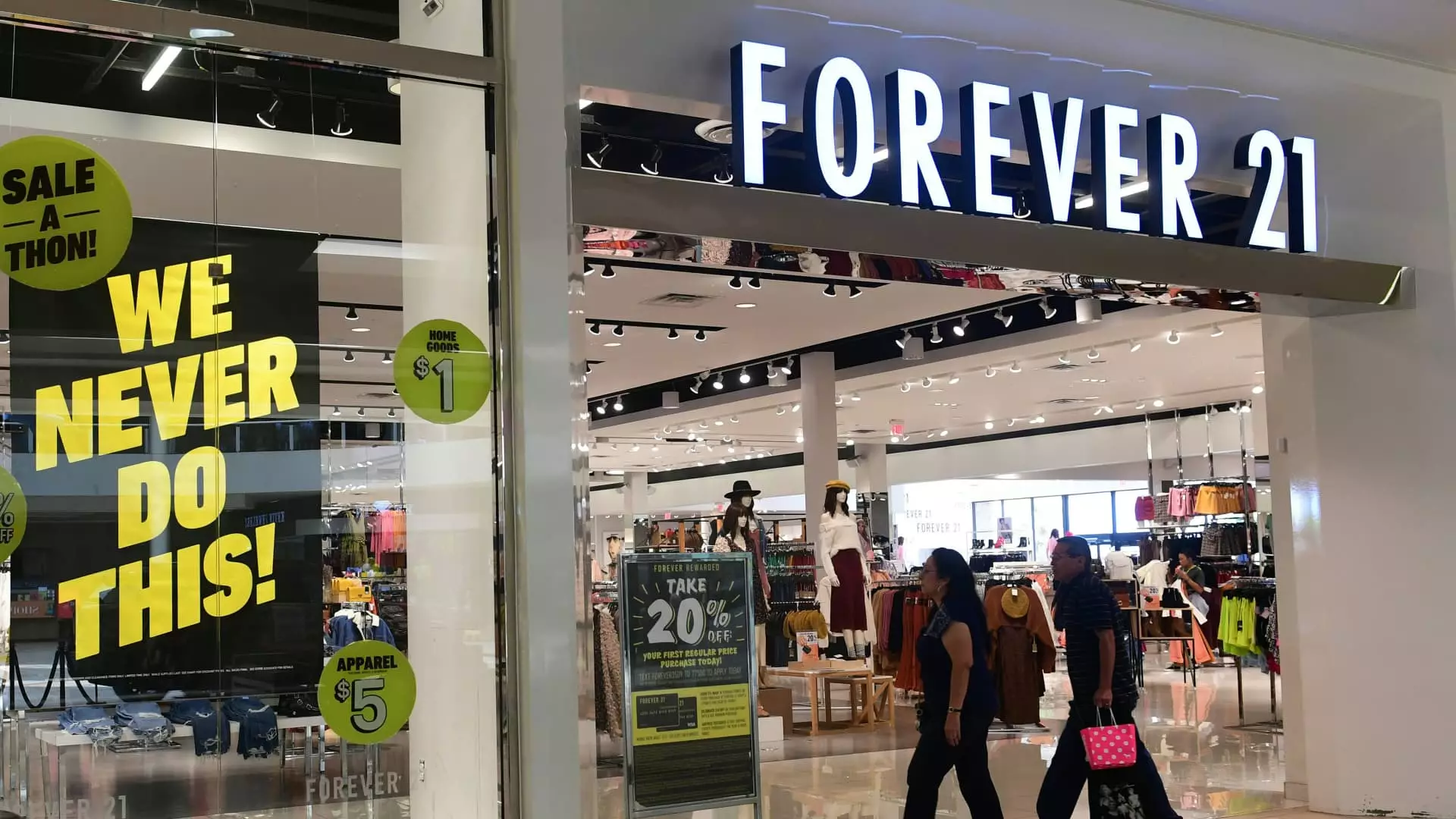Forever 21 has less and less time to turn its fortunes around as it grapples with a series of financial setbacks. The beloved fast fashion retailer is reportedly in discussions with liquidators, indicating that all is not well within its business structure. These negotiations signify a growing urgency as the company contemplates a second filing for bankruptcy. Once considered a leader in the fast fashion sector, Forever 21 now faces the stark possibility of extinction as it struggles to attract potential buyers capable of revitalizing the brand.
Since January, management has made it clear that they are exploring strategic options, yet openly seeking liquidators suggests a pessimistic outlook. Liquidation may provide a way to recoup some losses to pay back creditors if a suitable buyer cannot be found. Regrettably, the company’s ability to become attractive to buyers is stymied by fierce competition from online giants like Shein and Temu, both of which have efficiently cornered the market. The narrative of Forever 21 serves as a stark reminder of how rapidly the retail landscape can change.
The financial woes of Forever 21 are not limited to a simple decline in profit margins but rather a labyrinth of complications that have been festering for years. The retailer has been hemmed in by higher tariffs and an inability to manage inventory effectively, ultimately leading to ballooning operational costs. As industry insiders have noted, profitability has long been elusive, and past attempts to cut corners have often backfired, resulting in deteriorating customer perception.
Moreover, while competition has intensified, the brand’s “cool factor” has significantly waned. Once adored by younger shoppers, Forever 21 now finds itself losing relevance as chic alternatives spring up, appealing to a generation hungry for trendy offerings. No longer a trendsetter, it seems to be struggling to keep up with the rapid tempo dictated by its competitors.
Compounding these existing issues, Forever 21’s partnership with Shein—once deemed a strategic alliance—has been far from straightforward. According to Jamie Salter, CEO of Authentic Brands Group, which owns a stake in Forever 21 and collaborates with Shein, the partnership remains a “work in progress.” With ongoing operational challenges, it raises questions about the efficacy of collaboration and its potential to bear fruit in a highly competitive landscape.
Despite all the challenges, Forever 21 is still in negotiation discussions; whether the conversation will lead to sustainable growth or simply serve as a temporary band-aid remains to be seen. Investors and stakeholders alike are left to ponder if this partnership will yield viable solutions or merely deepen an already precarious situation.
Looking back at Forever 21’s first bankruptcy filing in 2019, there may have been hope for a more prosperous future. Following a remodel of operations aimed to optimize business performance, it became part of a consortium with Authentic Brands Group and Simon Property Group. The restructuring succeeded in granting a temporary reprieve, cutting various unprofitable leases, but the year that followed has been riddled with further mismanagement and missed opportunities.
As the brand’s once-vibrant stores become mere shadows of their former selves, critics have prompted discussions on whether the company’s assets are even worth pursuing. Some questions remain about the value of Forever 21’s intellectual property, given that Authentic Brands has already secured control over it. This raises the issue of investment viability — who, besides Authentic Brands, would dare to take on a revival of a brand that has stumbled back-to-back in the marketplace?
The saga of Forever 21 provides an instructive case study regarding the evolution of consumer behavior and the retail environment. With the rise of online competitors like Shein and Temu — brands that not only capitalize on low operational costs but also leverage advanced technology to identify and act on consumer trends — traditional models of retail are rapidly becoming obsolete.
These shifts highlight an unsettling parallel to the earlier emergence of Amazon, which upended the landscape by driving an unprecedented wave of retailer bankruptcies and liquidations. The scenario illustrates the pressing need for adaptability, innovation, and a deep understanding of evolving consumer preferences in a fast-paced marketplace.
As Forever 21 navigates these turbulent waters, it remains uncertain whether it will find a salvation route or succumb to the overwhelming challenges it faces. The unfolding tale of the retailer is both a cautionary tale for the sector and an illustration of the relentless pace of change defining modern commerce.

